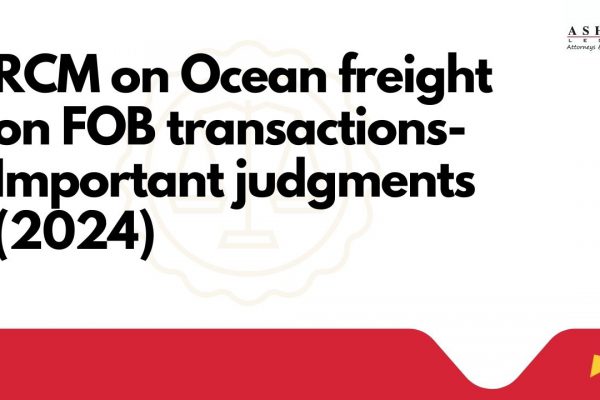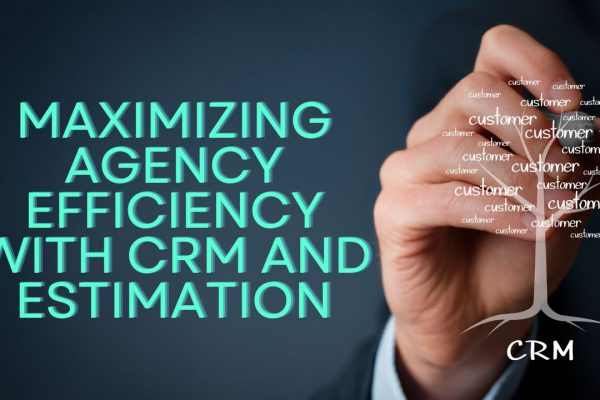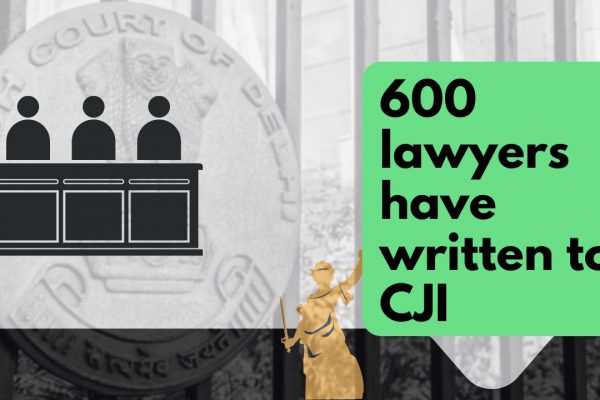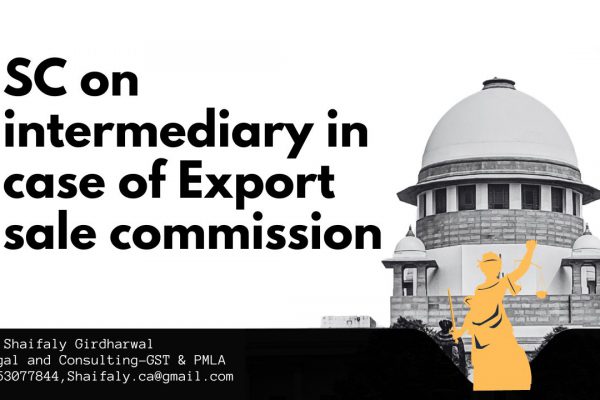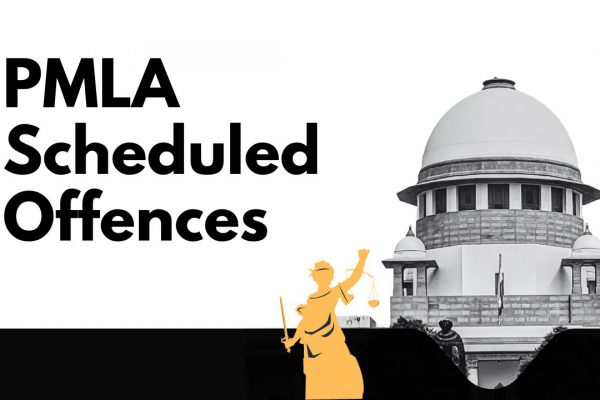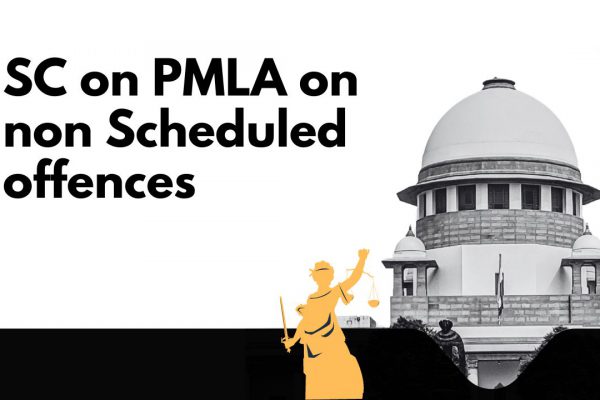100 FAQ’s on various issues in annual return
Basic provisions related to the annual return
Q1. What is Legal provision for filling GST Annual Return?
Q2. What is Form GSTR-9A and who is required to file it?
Ans. GSTR-9A is Annual return for a supplier who was under composition scheme as per section 10 of CGST Act anytime during the relevant financial year.
Q3. What is Form GSTR-9B and who is required to file it?
Ans. GSTR-9B is Annual return for person paying tax under section 52 which is person who is required to collect tax. Since provision of section 52 is applicable from 01st October 2018 only, such persons are not required to file GSTR-9B for the year 2017-18.
Q4. Which Annual return is to be filed by taxable person if he was earlier registered as composition taxpayer but later he switched over from composition scheme and his status as on 31st March 2018 is a regular taxpayer?
Ans. He has to file both the Annual Return GSTR-9A and GSTR-9.
Download this
R9 SERIES 1 By RKSoni

Q5. (i) Whether a Taxpayer shall be required to file GSTR-9 even though his Regn has been cancelled before 31st March 2018? (ii) Whether answer remains the same if his application for cancellation was pending as on 31st March 2018?
Ans. i) As per Legal provision of Section 44(1) of CGST Act, every registered person shall be required to file GSTR-9. Hence, even if the status of taxpayer is not registered as on 31st March 2018 but he was registered between July-17 to March-18, he shall be required to file GSTR-9 providing details for the period during which he was registered. ii) if a taxpayer had applied for cancellation of registration but the application was pending as on 31st March 2018, he shall be required to file GSTR.
Q6. If a LUT had not been executed, and sales had been reported as “Without Payment of Taxes, should the same now be treated as Exports with payment of Taxes?
Ans. Non-execution of LUT is a procedural non-compliance. Such non- compliance cannot turn the nature of the transaction from ‘exports without payment of tax’ to ‘exports with payment of tax’. A taxpayer needs to report the transaction under Table 5 of GSTR-9 as “Exports without payment of tax”. Penal consequences, if any, need to be dealt with.
Q7.Whether GSTR-9 to be filed even for Nil Turnover during the year 2017-18?
Ans. Yes, facility to file GSTR-9 on single click may be provided in such case.
Q8. What is the Due date of filling GSTR-9?
Ans. As per section 44(1) of CGST Act, every registered person is required to file annual return on or before 31st December of the year succeeding the FY, But for this year , extension has been made till 30.06.2019
Q9. Whether transactions for the period April-17 to June-17 are also to be included in GSTR-9 for FY 2017-18?
Ans. No, instructions forming part of GSTR-9 which was notified by Notification No. 39/2018 dated 04th September 2018, clearly mentions that only details for the period July 2017 to March 2018 are to be provided in GSTR-9.
Q10. If a Taxpayer has obtained more than one GST Registration even though he has a single PAN, then whether GSTR-9 is to be filed at Entity level or GSTIN wise?
Ans. As per Sec 44(1) of CGST Act, everyit shall be treated as a distinct person in respect of each such registration. Hence, GSTR-9 is required to be filed separately for each such GSTIN.
Q11. What is the difference between GSTR-9 and GSTR-9C?
Ans. Requirement of GST Audit u/s 35(5) would arise only if prescribed limit of turnover exceeds Rs. 2 cr. and certified reconciliation statement -GSTR-9C shall require to be submitted.On the other hand, GSTR-9 is an Annual return which is required to be filed by every registered person irrespective of threshold limit of turnover.
Q12. Which are the parts of information sought in GSTR-9?
Ans. GSTR-9 contains total 6 parts spread out within 19 Tables. Details required in each part is as below:
Part-I: Basic information of Tax payer from Table 1 to 3
Part-II: Details on which tax is to be paid in Table 4 & 5
Part-III: Details of Input tax credit from Table 6 to 8 Part-IV :Details of tax paid and payable in Table 9 Part- V: Details of transactions of 2017-18 reported during April-18 to Sep-18 inTable 10 to 14 Part-VI: Other information from Table 15 to 19
Q13. What will be source of information for filling up GSTR-9?
Ans. GSTR-9 is merely a compilation of data filed in GSTR-3B and GSTR-1. Hence, so far as Outward supplies and tax payable in the annual return is concerned, the same are to be extracted from Form GSTR 1 only.
Inward supplies, ITC & tax credit and the net tax paid in cash are to be gathered from Form GSTR 3B.
But before filing GSTR-9, Value as per GSTR-3B and GSTR-1 must align. If there are any differences, then the same must be adjusted to subsequent returns filed up as per circular 26/26/2017-GST dated 29th December 2017.
In case the values as per Form GSTR 3B and GSTR 1 are not matching with each other, one may arrive at a differential value of tax payable and tax paid as per annual return. However, the additional tax liability may be paid through Form DRC-03.
Q14. If taxpayer has identified some information which are missed to be reported in GSTR-3B or GSTR-1, whether the same can be added while filing GSTR-9?
Ans. GSTR-9 is a merely compilation of data filed in GSTR-3B and GSTR-1 and no other information can be incorporated in GSTR-9. GSTR-9 requires details from monthly/quarterly returns on ‘as is’ basis. Even if a taxpayer has identified data fed in GSTR-1 / GSTR-3B as incorrect, still the same data is to be taken for reporting in annual return. The actual data present in the financial statements and the books of accounts of the entity is not to be considered at all for the purpose of reporting in annual return.So, the intent of the form is not to allow rectification of data filed in the monthly/Quarterly returns but only aggregation of such data in respect of the financial year.
Q15. If no other information can be furnished in GSTR-9 over and above what is stated in GSTR-1 and GSTR-3B, then how can the taxpayer pay the tax liability in case he identifies certain liabilities which are missed to be reported?
Ans: If there is any additional liability missed to be reported in GSTR-1 / GSTR-3B pertaining to 2017-18, the same will be reported in subsequent GSTR-1 / GSTR-3B up to September 2018. However, if the same is missed to be reported in GSTR-1 / GSTR-3B up to September 2018, as of now there is no clarity provided by Government whether the same can be paid through GSTR- 3B or DRC-03.
Q16. If GSTR-9 is a compilation of the earlier returns (GSTR-1 / GSTR- 3B) filed, then whether GSTR-9 will be auto-populated?
Ans: YES. Its available at GSTN Portal.
Q17. What is difference between Legal Name and Trade Name?
Ans. Legal name is a name given by statue which is generally found in PAN , SINCE Trade name is a name from which entity is known generally brand name. Person may have legal name which is different from Trade name e.g. “SWIFT” could be a trade name while its legal name is MARUTI SUZUKI Limited. Legal name and trade name will be auto populated from GST Registration.
Q18. Which information shall be provided in Table 4?
Ans. As per heading of Table-4, – Details of Advances on which tax is payable, – Inward supply on which tax is payable on RCM basis and – outward supply on which Tax is payable Which was already reported in returns filed during the financial year that is for the period July-17 to March-18 is to be reported in Table-4 of GSTR-9.
Table-4K and 4L also contains details of supplies / tax declared through Amendments. In this Table, amendments related to invoices of July-17 to March18 declared in GSTR-1 of July-17 to March-18 will be reported in Table- 4 of GSTR 9 and Amendments related to invoices of July-17 to March-18 declared in GSTR-1 ofApril-18 to September-18 will only be reported in Part V Table 10 & 11 of GSTR 9. E.g. Tax payer has filed GSTR-1 for the month of August-17. Now he has identified one invoice to be amended in August-17 return. If such amendments have been made up to March-18 return, then the same will be reported in Table-4K/4L of GSTR-9. However, in case such amendment is made in GSTR-1 of April-18, then the same will be reported in Table 10 or 11 as the case may be.
Q19. Where to report DN / CN issued to unregistered person?
Ans. Unlike B2B supplies, DN/CN issued to unregistered person is to be adjusted against outward supply and net supply and is to be furnished in Table 4A. Even credit note raised against transaction reported as B2C in GSTR-1 is also to be adjusted in Table-4A.
Q20. Whether supply made to registered person (B2B) as required in Table-4B also includes outward supply on which tax is payable by recipient on reverse charge basis?
Ans. No, only outward supply made to registered person on which tax is payable on forward charge basis by supplier will be reported in Table 4B. Outward supplies under reverse charge shall be reported in Table-5C. e.g. in case of GTA operator filing his GSTR-9, he is required to report outward supply in Table-5C.
Q21. Where to report stock transfer made to another branch situated in another state if both are registered?
Ans. Since both branches are registered persons for a particular state, these transactions are to be reported in supplies made to registered person (B2B) Table 4B.
Q22. Tax payer has made two type of exports, one with payment of tax and the other without payment of tax. Where to report both these transactions?
Ans. Export with payment of tax is to be reported in Table-4C. This table warrants details of transactions where tax is payable. Exports without payment of tax is to be reported in Table-5A. Same principle will hold good for supply to SEZ also.
Q23. What is the meaning of deemed exports to be reported in Table-4E?
Ans. As per Notification No. 48/2017-of CGST act, deemed exports are : – Supply of goods agst advance authorization- Supply of capital goods agst EPCG authorization – Supply of goods to EOU ( – Supply of gold by bank/PSU specified in Notification No. 50/2017-Customs dated 30th June, 2017. Since such supplies are notified as deemed export from 18th October 2017 only, supply before that will not be termed as deemed export.
Q24. Whether all advances on which tax is paid but subsequently got adjusted against invoices shall also to be reported in Table-4F?
Ans. No, only outstanding advances as on 31st March 2018 on which tax was paid but invoice not issued against the same are to be reported in Table-4F
Q25. Whether advances received during pre-GST regime but against which invoice is not yet issued is to be reported in Table-4F?
Ans. No, only advances on which GST has been paid but remained unadjusted as invoice not issued is to be reported in Table-4F.
Q26. Which information shall be to be provided in Table 4G for Inward supply on which tax is to be paid on reverse charge basis?
Ans. Tax paid on reverse charge basis under these sections are to be reported in Table 4G. There are two type of reverse charge transactions, one is specific reverse charge on certain supplies u/s 9(3) of CGST Act / 5(3) of IGST Act and another is general reverse charge which was effective till 12th October 2017 applicable on procurement of inward supply from unregistered person u/s 9(4) of CGST Act / 5(4) of IGST Act.
Q27. Whether credit note / debit note issued during 18-19 in respect of transactions of July-17 to March-18 is to be reported in Table 4I and 4J?
Ans. No, only credit note / debit note issued and disclosed in the GST returns between July-17 to March-18 is to be reported in 4I and 4J.
If the issue date of credit note/debit note is ranging between July 2017 to March 2018 and if the same has been reported in the GST returns during the period April – September 2018, then it will form part of Part V of the Annual return.
However, if the issue date of the credit note/debit note is after 31st March 2018, then it needs to be reported in the Annual return of 2018-19 even though the invoice to which it relates may belong to the period 2017-18.
Q28. How are amendments made in supply to be reported in GSTR-9?
Ans. Amendments in supply is to be reported in Table-4K, 4L, 5J, 5K, 10 and 11 depending on nature of transaction. E.g. If value of original B2B supply is Rs.1000 but which was reported as Rs.100 in GSTR-1 and subsequently amendments has been made in next GSTR-1 with correct value then Rs.100 will be reported in Table- 4B and Rs.900 will be reported in Table-4K.
Q29. Which information is to be provided in Table-5?
Ans. Details of outward supplies on which no tax is payable like Export or SEZ supply with LUT or Bond is to be reported in Table-5. Even outward supply on which recipient is liable to pay tax on RCM basis is to be reported here only.
FAQ on ITC in annual return
Q30. Which information is to be reported in Table-6?
Ans. In Table-6, Input tax credit availed in GSTR-3B filed for the period July- 17 to March-18 will be auto populated in Table-6A. Break up of such ITC will be reported in Table-6B to 6H. Further, Transitional credit which was not reported in GSTR-3B is to be reported in Table 6K and 6L. Details required in each table are as below:
– Table-6A : Auto populated ITC from GSTR-3B
– Table-6B : All other ITC details – Table-6C : ITC of tax paid under reverse charge basis u/s 9(4) or 5(4) – Table-6D : ITC of tax paid under RCM basis u/s 9(3) or 5(3) – Table-6E : IGST paid on import of goods – Table-6F : IGST paid on import of services – Table-6G : ITC received from ISD – Table-6H : ITC reclaimed which was reversed earlier –
Table-6K : ITC of TRAN-I – Table-6L :ITC of TRAN-II
Q31. GSTR-3B doesn’t require ITC to be bifurcated into Input, Input service and capital goods whereas Input tax credit details as per Table-6 requires such break up. Howto report the same?
Ans. Basically GSTR-9 is prepared based on earlier process of filling GSTR-1, GSTR-2 and GSTR-3. In GSTR-2, there was a requirement to bifurcate ITC into Input, Input service and capital goods. However, as GSTR-2 was not required to be filed till now, one will have to carry out additional exercise to identify category of ITC into Input, Input service and capital goods from books of account.
Q32. Whether any ITC pertains to FY 2017-18 but claimed subsequently in GSTR-3B of April-18 to September18 will be reported in Table-6?
Ans. No. Even though ITC belongs to FY 2017-18, the same will not be reported here.Only ITC claimed up to March-2018 in GSTR3B will be reported here.
Q33.Will the portal accept negative figures in the GSTR-2A reconciliation table? For ex: The recipient has input tax credit but the supplier has not filed his GSTR-1, hence its not reflecting in GSTR-2A.
Ans.Table 8C will show negative values if Table 8A shows less value as compared to Table 8B and 8C. The portal will accept negative values.
Q34. Whether ITC of TRAN-II filed after March-18 will be reported in Table-6L?
Ans. No. ITC of TRAN-II credited in electronic credit ledger up to 31st March 2018 only be reported in Table-6L. Same way any reversal which have impact on electronic credit ledger up to 31st March 2018 is to be reported in Table-7G.
Q35. Which information is provided in “Any other ITC availed but not specified above” in Table-6M? Ans. Any other ITC which is not specifically included in 6B to 6L will be reported here. This will include ITC claimed through Form ITC-01, ITC-02, and TRAN-III credit.
Q36. What is scope of Table-7 so far as Table 7A to 7D is concerned? Ans. ITC reversed as per various rules in GSTR-3B filed for the period up to March-18 is to be reported in Table-7.
– Table-7A:As per Rule-37. Amount of ITC reversed on non-payment of value of supply along with tax within a period of 180 days from date of invoice is to be reported.
– Table-7B:As per Rule-39.deals with the procedure for distribution of ITC credit by ISD. If any supplier gives credit note to the ISD then input tax credit is required to be reduced and shall be apportioned to each recipient in the same ratio in which the input tax credit contained in the original invoice was distributed.
– Table-7C:As per Rule-42 Rule 42 of CGST Rules describes manner of determination of input tax credit in respect of inputs or input services and reversal thereof. If Input and Input service is used partly for business purpose and party for non-business purpose or such input and input service is used for effecting taxable supply and exempt supply, then ITC reversal is required as per Rule-42 and the same is to be reported in Table-7C.
Table-7D:As per Rule-43 On similar lines of Rule 42, Reversal of input tax credit of capital goods is required when capital goods are used partly for business purpose and partly for non-business purpose or such capital goods are used for effecting taxable as well as exempt supply. ITC reversed on capital goods as per Rule-43 is to be reported in Table-7D.
Q37. Whether ineligible ITC as reported in Table-4D of GSTR-3B is to be reported in Table-7E of R-9? Ans. No, Net ITC as per GSTR-3B does not take into consideration ineligible ITC as reported in Table-4D of GSTR-3B. So auto populated figure of Net ITC in Table-6A of GSTR-9 does not contain ineligible ITC. Since, taxpayer has not availed such ineligible ITC at all, there is no requirement to reverse it. This will be applicable in a situation wherein Table 4A of GSTR 3B does not contain the amount of ineligible input tax credit. However, if taxpayer later on identified certain ITC claimed to be ineligible at the time of filing GSTR-9 then such amount is to be reported in Table-7E of GSTR-9
Q38. Which information is to be furnished in “other reversals” as mentioned in Table7H?
Ans. Credits is required to be reversed as per rule 44 of the CGST Rules, 2017 in case of special circumstances read with section 18(4) and section 18(6) of the CGST Act, 2017. Any other credit reversal made up to March-18 not specified in Table-7A to 7G is to be reported in Table-7H. However, credit reversal pertaining to 2017-18 but reversed after March-18 is to be reported in Table-12.
Q39. Which information are contained in GSTR-2A Table-3 and Table-5 which are autopopulated in Table-8A of GSTR-9? Ans. Table-3 of GSTR-2A contains details of inward supplies received from registeredperson other thansupplies attracting Reverse charge and Table-5 of GSTR-2Acontains details of Debit note / credit note received during the current period.
Q40. What is the purpose of Table-8?
Ans. Basically Table-8 calculates total ITC that is deemed to be lapsed during the FY 2017-18which is sum total of the below two items:
- a) Difference of ITC as per GSTR-2A and ITC actually availedGSTR-2A reflects total ITC passed on to taxpayer but out of that taxpayer mightnot have claimed some ITC voluntarily (to be reflected in Table-8E) because it is ineligible (to be reflected in Table-8F)
- b) Difference of IGST paid on Import and IGST credit availed Further, at the time of Import, Taxpayer would have paid IGST but he might not have claimed full IGST paid as ITC. Sum total of above differences are ITC which will not be available to taxpayer in 2017-18 is what Table-8 want to draw down.
Please note that there might be a situation where some ITC available in GSTR-2Abut taxpayer may not have claimed it up to March-2018 but claimed during April18 to Sep-18, that credit is also to be reported in Table-8C. This ITC will not form part of total ITC to be lapsed. Unlike normal Input tax credit, government has not provided mechanism to report IGST on Import, paid during 2017-18 but claimed in April-18 to Sep-18 whichtaxpayer can legally claim. ( More clarification still awaited )
Q41. Whether total ITC lapsed as per Table-8K will reduce ITC from Electronic credit ledger? Ans. No, total ITC lapsed is only informative and it will not have any impact on Electronic credit ledger.
Q42. Which period information is to be provided in details of tax payable and paid inPart-IV Table-9? Ans. Tax payable and paid details are to be extracted from GSTR-3B for the period July-March 18
Q43. What is the scope of Part-V Table-10 to 13? Ans. Table 10 to 13 plays a very important role in GSTR-9. Any changes in supply of July-17 to March-18, made through Amendments, credit note or debitnotes which was reported in GSTR-1 of April-18 to Sept-18 is to be reported in Table-10 if the same is resulting into increase in value of supply.
However, if it is resulting in to reduction in value of supply then the same is 2b reported in Table -11. Similarly, if any input tax credit belongs to the period July-17 to March-18 but which has been claimed in GSTR-3B of April-18 to September-18 is to be reported in Table-12 and 13. If the same is resulting into reversal of Input tax credit, then it will form part of Table 12 and it will be reported in Table-13 if the same is resulting intoaddition of input tax credit.
Q44. How differential tax payable is calculated as per Table-14? Ans. As discussed above, when there is a change in supply effected during July- 17 toMarch-18 adjustment is required to be reported in Table-10 and 11. Such amount of net tax payable will be reported in Table-14.
FAQ’s related to refund and demand in annual return
Q45. GST Refund is claimed before March-18 but sanctioned in April-18. How to reportsuch kind of situation in Part VI Table-15?
Ans. GST Refund claimed during July-17 to March-18 is to be reported in Table-15A. Ifrefund is sanctioned after March-18 then that is not to be reported in Table-15B.
Q46. Refund of erstwhile law was claimed before July-17 but received in GST regime.Whether the same is to be reported in Table-15B?
Ans. No. Non-GST refund claim as well as Non-GST demand is not to be reported intable-15.
Q47. Taxpayer has received a notice from its jurisdiction range office that there is a taxdifference between GSTR-1 vs GSTR-3B / GSTR-3B vs GSTR-2A. Whether such taxdifferences are to be reported in total demand of tax in Table-15E? Ans. NO
Q48. What is deemed supply under section 143?
Ans. As per section 143(3)/ (4) of CGST Act, when input and capital goods are sent to job-worker for job work but are not recd back within the stipulated time (1year for input and 3 years for capital goods) from the date of it being sent, same will be deemed as supply in the hands of the supplier on the day on which the input or capital goods were sent by the principal. However, since time limit of 1year and 3 year will not get triggered as on 31st March 2018, there will not be anytransaction to be reported in Table-16B.
Q49. Goods sent to job worker before July-17 and returned between the periods July-17 to March-18. Whether this transaction is to be reported in Table 14
Ans. No, this situation gets covered by section 141 of CGST Act and not by section 143 of CGST Act. Hence, they are not required to be reported. If goods are returned within stipulated time as provided in section 141 then no tax shall be payable. However, if goods are returned beyond the stipulated time as provided in section141 then input tax credit availed by the Principal shall be recovered as arrears of tax under CGST Law and no input tax credit of such tax paid shall be allowed under the CGST Law.
Q50. How to extract details of HSN wise summary of inward supplies where the same isnot required to be reported in GSTR-3B?
Ans. GSTR-9 is prepared based on earlier process of filling GSTR-1, GSTR-2 and GSTR-3. In GSTR-2, there was a requirement to report details of HSN wise summary of inward supplies. However, as GSTR-2 was not required to be filed till now, one will have tocarry out an additional exercise to identify and report HSN wise summary from thebooks of accounts.
Q51. Whether GSTR-9 can be revised?
Ans. No such option has been provided in the law till now.
Q52. How much late fee is payable for late filing of GSTR-9?
Ans. As per section 47(2) of CGST Act, Late fee for belated filing of GSTR-9 is Rs.100 per day subject to maximum of 0.25% of turnover in a state/UT. Similar provision is there in SGST Act also. Hence, in total there will be late fee of Rs.200 per day subject to 0.50% of turnover in a state on late filing of GSTR-9.
Q53. What are the consequences of the failure to file GSTR-9?
Ans. If one fails to file GSTR-9 then first late fees will be payable as discussed above. Anotice may be issued u/s 46 requiring him to furnish such return within stipulated time.
Q54. How to prepare Error free GSTR-9?
Ans: One must Follow below mentioned points in mind before filing GSTR – 9:
- Reconciliation of the Books of Accounts and GSTN Data of Inward- outwrd supply, ITC, Taxes Paid and adjustments as appeared at GSTN Portal
- Stock transfer between the units/branches of the company should be matched with the books of accounts to avoid any discrepancy in the stock-in-hand balance of the books and that of the GST data.
- Matching of e-way bill data with the tax invoices issued during the period is also very necessary. The e-way bill data state-wise should be carefully mapped with the invoices to keep track of the goods transported and GST paid thereon.
- Taxpayers should ensure that all the purchase & other service invoices are accounted for in the books of accounts and input tax credit has been duly availed. Any discrepancy between the input tax credit claimed and tax paid on purchases will result in an incorrect claim of ITC in GST returns.
- Before going forward with filing the annual returns, the taxpayers should reconcile all the monthly or quarterly GST returns with the books of accounts. The taxable, exempted and nonGST turnover should be carefully matched.
- Ensure that the invoices on which input tax credit has been claimed should be paid within 180 days to the suppliers. If not, the credit availed on the same will be reversed and the taxpayers will be liable to pay such amount along with the interest and penalty if any.
Q.55 Do I need to provide/ update details in all the tables in Form GSTR-9 before filing?
Ans. You are required to provide details only in those tables which are relevant to your business.
Q.56 Can I change the details after clicking on ‘Proceed to File” button?
Ans. Yes. You can change/edit the details before filing of Form GSTR-9 return. However, the auto-populated data will not be editable in the following fields.
– Table 6A: Total amount of input tax credit availed through Form GSTR-3B (sum total 4A of Form GSTR-3B)
– Table 8A: ITC as per Form GSTR-2A (Table 3 & 5 thereof).
– Table 9 (Except tax payable column)
Q 57. Are the accounts maintained by the registered taxable person required to be audited by a CA or Cost Accountant under GST?
Ans. Every registered person whose aggregate turnover during a FY exceeds the prescribed limit of Rs. 2 crore, shall get his accounts audited by a Chartered Accountant or a Cost Accountant.In all other cases, no audit is required to be conducted by the Chartered Accountant or Cost Accountant.
Q 58. What is the turnover that should be reckoned to determine the applicability of audit under GST?
Ans. Section 35(5) commences with the expression “every registered person whose turnover during a financial year exceeds the prescribed limit”whereas the relevant Rule 80(3) uses the expression “every registered person whose aggregate turnover during a financial year exceeds two crore rupees”. It must be noted that the word turnover has not been defined whereas the expressions “aggregate turnover” has been defined. One may note that the expression “turnover in State or turnover in Union territory” is also defined. In this backdrop the following understanding is relevant:
- a) Aggregate turnover is PAN based while turnover in a State/ UT is similarly worded except to the extent that turnover in a State/ UT is limited to a State
- b) It is therefore, reasonable to interpret that the word turnover used in section 35(5) ought to be understood as aggregate turnover (PAN level).
- c) For the financial year 2017-18, the GST period comprises of 9 monthswhereas the relevant section 35(5) uses the expression financial year
Q 59. Should the supply of alcohol for human consumption be included in determining the threshold limit of Rs. 2 crore by a person registered under GST?
Ans. The definition of aggregate turnover includes exempt turnover. Exempt turnover is defined under CGST Act to mean supply of any goods or services or both which attracts nil rate of tax or which may be wholly exempt from tax under section 11, or under section 6 of the Integrated Goods and Services Tax Act and includes non-taxable supply. Non-taxable supply is defined under section 2(78) of CGST Act to mean a supply of goods or services or both which is not leviable to tax under this Act or under the Integrated Goods and Services Tax Act. Section 9(1) of CGST/ SGST Act and section 7(1) and 5(1) of UTGST and IGST Act respectively exclude alcoholic liquor for human consumption from the levy/ charge of GST. On a combined reading of the charging sections with the definitions of non- taxable supply and exempt supply, it becomes clear that alcoholic liquor for human consumption forms part of exempt turnover. Since aggregate turnover includes exempt turnover, value of alcoholic liquor for human consumption is to be included while computing threshold limit of Rs. 2 crore.
Q 60. Will the term ‘aggregate turnover’ includes stock transfers/ cross charges effected between branches located in two different States?
Ans. Section 2(6) of CGST/ SGST Act defines aggregate turnover to include ‘inter-State supplies of person having same PAN’. Thus, stock transfers/ cross charges of services provided from a branch located in one State to a branch located in another State will be included in the aggregate turnover of the branch supplying the goods/ services.
Q 61. Will the term ‘aggregate turnover’ includes stock transfers effected within the State having same GSTIN for determining the threshold limit?
Ans. The term ‘aggregate turnover’ shall not include stock transfers effected within the same State having single GSTIN for the purpose of determining the threshold limit. However, where more than one GSTINs has been taken for branches located in the same State, then such branch transfers shall be included for computing threshold limit of Rs.2 crore to identify applicability of this audit requirement.
Q62. A Taxpayer exclusively dealing in exempted supplies of goods/services exceeds Rs. 2 crore turnover , be required to file GSTR-9C?
Ans. Yes, Aggregate Turnover’ includes exempted supplies.
Q63. Is GSTR-9C is to be filed for each registration for each of the States?
Ans. A person having registration in more than one State is required to file FORM GSTR-9C registration wise, in each and every State. Also, in case of more than one registration in a State, GSTIN wise audit is required i.e. once the PAN based aggregate turnover exceeds Rs. 2 crore, every registered person having same PAN is OBLIGE TO get its accounts audited.
Q64. Whether a CWA or C A required to be registered as a GST practitioner for the purpose of certifying FORM GSTR-9 ? Ans. The GST Act/ Rules do not vest a GST practitioner with the power to audit under section 35(5). The power to audit is granted only to a Chartered Accountant or Cost Accountant. Therefore, a Chartered Accountant is not required to be registered as a GST practitioner for the purpose of certifying FORM GSTR-9C
Q 65. What are the documents to be enclosed along with FORM GSTR9C?
Ans. As per section 35(5), a copy of audited accounts and such other documents in such form and manner ‘as may be prescribed’ has to be submitted along with reconciliation statement. No documents other than audited annual accounts have been prescribed in Rule 80(3). Part B of FORM GSTR-9C requires the GST auditor to enclose a copy of audit report of the entity, where the audit of the entity has been carried out by another person under a statute other than GST Act. Documents declared by the said statute which forms a part of the audited financial statements must also be annexed to the audit report.
Q 66.Should FORM GSTR-9 and FORM GSTR-9C be filed separately?
Ans. Sec 44(2)provides a registered person to file annual return in FORM GSTR-9 along with a copy of the reconciliation statement in FORM GSTR-9C. Thus, FORM GSTR-9C has to be filed along with FORM GSTR-9 in cases where aggregate turnover exceeds Rs. 2 crore.
Q 67.Can the late fee be waived, in some special case ?
Ans. The Government may, by notification, waive in part or full, any late fee referred to in section 47 for such class of taxpayers and under such alliviate circumstances as may on recommendations of the Council. However, no notification has been issued by the Central Government/ State Government as on date to waive off late fee applicable on Annual return.
Q 68. Does the Act provides revision of FORM GSTR-9C?
Ans. NO, There is no such provision to revised FORM GSTR-9C.
Q69.Will audit under section 35(5) be applicable to non-filers or unregistered persons liable to take registration?
Ans. The audit under section 35(5) of the CGST Act to be conducted by CA or CWA is applicable only to a registered person. A non-filer is still a registered person under section 25 of the CGST Act.
Hence, he may be required to get the audit conducted U/s 35(5) of the said Act. Also as per Instruction No. 2 appended to FORM GSTR-9C, it is mandatory to file all FORM GSTR-1, FORM GSTR-3B and FORM GSTR-9 for the FY 2017-18 before filing this return.
However, unregistered person who is liable to take registration under section 25 of the CGST Act is a taxable person. But the said unregistered person is not a registered person as defined under section 2(94) of the CGST Act, 2017.
Q 70.What are the records to be reconciled in FORM GSTR-9C?
Ans. The records to be reconciled in GSTR-9C are Books of accounts of registered person – if the registered person has multiple registrations, information needs to be derived from the Audited Annual Financial Statements of the entity, with Annual Return of registered person in FORM GSTR-9.
Q 71 .What are the Main contents of FORM GSTR-9C?
Ans. Basically Form 9C is a reconcialation statement between GST Returns earlier filed and Accounts books of the registered person. It contains 2 parts. Where Part-A is Reconciliation Statement and Part B is Certificate to be issued by GST auditor.
Hence in terms of section 35(5) of the Act, an un registered person who is liable to take registration is not required to get his accounts audited.
Q 72.What is the turnover intended to be declared in Sl. No. 5A of FORM GSTR-9C?
Ans. Sl. No. 5A is intended to report the turnover as per the audited Annual Financial Statement for a GSTIN. There may be cases where multiple GSTINs (State-wise) registrations exist for the same PAN. This is common for persons/ entities with presence over multiple States or in respect of multiple registrations in a single State/ UT.
The Government vide its instructions has indicated that such persons/ entities would have to internally derive their GSTIN wise turnover and provide the same to the auditors to verify and declare in this Sl. No. 5A. Turnover to be declared under this Sl. No. 5A must purely flow from the ‘audited annual financial statements’ even if such turnover consists of adjustments/ revenue recognition on account of a requirement of an Accounting Standard (E.g.: AS-7 in case of ‘Construction Contracts’).It cannot and must not include “Deemed supplies under Schedule I” as Sl. No. 5D separately covers such adjustments.
Q 73.What details are to be provided in Sl. No. 5B (Unbilled revenue at the beginning of financial year)?
Ans. Sl. No. 5B requires addition of unbilled revenue at the beginning of financial year. Unbilled revenue which was recorded in the books of accounts on the basis of accrual system of accounting in the earlier financial year (like WIP recorded as income last year based onpercentage of completion method) for which the invoice is issued under GST law is required to be declared here.
In other words, when GST is payable during the financial year on such revenue (which was recognized as income in the earlier year), the value of such revenue is to be declared here. For the purposes of GST audit of the period 1-Jul-2017 to 31-Mar-2018, the beginning of the financial year shall mean 1-Jul2017.
Q 74.What are the adjustments to be included/ excluded from Sl. No.5C of FORM GSTR-9C?
Ans. Advances received can be for various purposes. Therefore, the advances on which GST is liable should only be considered for the adjustment.
Q 75.Provide illustrations of transactions to be reported in Sl. No. 5D of FORM GSTR-9C (Deemed Supply under Schedule I)?
Ans. In Sl. No. 5D, deemed supply as mentioned in Schedule-I is to be reported here.
Q 76.What is the methodology to extract turnover from April 2017 to June, 2017?
Ans. The criteria for reducing turnover for the period April 2017 to June 2017 from the total turnover would be based on taxability under the erstwhile laws i.e. Vat /Excise/Service tax/ Works Contract, as per point of taxation under the said laws but not when the revenue was recognised as per relevant accounting standards. Amounts forming part of turnover relating to works contracts, where consideration was received during the period April 2017 to June 2017, but either supplies were effected or services were rendered after June 2017, needs to be deducted . This is because the said consideration was liable to tax on receipt basis as per service tax law. However, the same value needs to be added back in Sl. No. 5(O), since the aforesaid supplies would be liable to tax under GST law also as per section 142(11)(c). At this juncture, it is important to note that the relevant service tax and value added tax paid on such advances for which supplies are effected during the GST regime would be available as CGST/ SGST credit as per section 142(11)(c) of the CGST Act.
Q 77. What is the effect of credit notes issued in relation to exempt supplies, zerorated supplies and non-GST outward supplies?
Ans. Supply of exempt, zero-rated and non-GST outward supply of goods and/ or services are not liable to GST. In such a scenario, the credit notes issued for claiming reduction in the taxable value shall be recorded in the audited annual financial statements. Such credit notes should be declared against Part II Sl. No. 5J of FORM GSTR-9C. Where credit notes related to zero-rated supplies are already reported in FORM GSTR-1, in FORM GSTR-9 as well as in books of accounts, such credit notes may not be declared in this Sl. No. 5J.
Q 78.What are the implications upon issuance of credit notes?
Ans. Financial credit notes would not adjust the amount of GST involved in the original tax invoice issued at the time of supply of goods / services. Accordingly, the txns value of supply of goods or services or both , shall stand reduced, even though tax paid thereon remains the same. This may result in higher amount of GST being paid considering the adjusted value of original supply. Since, the value of financial credit notes is to be reduced from the financial statements and not the GST Annual return, it is required to be adjusted in Sl. No. 5J of FORM GSTR-9C.
Q79. Whether the RTP needs to be disclose details of “notice pay” recovery from employees in FORM GSTR-9C?
Ans. If the Regd person has considered the notice pay recovered from employees as a taxable supply but has not disclosed the same as an income in the Profit and Loss account, it would be reported under Sl. No. 5O of FORM GSTR-9C for the purpose of reconciliation. Such Data can be ascertained from credits in the Salary/ Wages ledger maintained in the books of accounts.
Q 80.Is there any transaction which appears under the expense head, but has an impact on the outward taxable supplies for the purpose of GST? Ans. Yes, one of the cases can be incentives/ rebate received from supplier which is considered as a supply under GST. Incentives/ rebate received from the supplier can amount to a taxable supply under the GST. Where the taxable person has reduced the incentive/ rebate received from the cost of purchase in the books of accounts, the said amount will be added under Sl. No. 5O so as to reconcile with value declared in FORM GSTR9.
Q 81.Is there any reconciliation required in FORM GSTR-9C in case of sale of capital goods?
Ans. In respect of sale of capital goods, only the profit/ loss arising on the sale of such capital goods is disclosed in the Profit and Loss account. Whereas, the GST on supply of capital goods is leviable on the transaction value or input tax credit is reversed as per the formula prescribed in section 18(6) of the CGST Act.In order to reconcile the difference, the profit/ loss arising on sale of such capital goods has to be adjusted along with the transaction value on which GST has been paid under Sl. No. 5O to reconcile with the amount disclosed in FORM GSTR-9. Data for such transactions can be ascertained from the deletions disclosed in the Fixed Asset Schedule / Fixed Assets Register.
Q 82.What is the effect of return of pre-GST inward supplies by a taxable person?
Ans. As per the transition provisions [Section 142(1)], taxable person is required to consider return of pre-GST inward supplies as an outward supply and raise a tax invoice for the same. However, for the purpose of accounts, the same would be considered as a purchase return and reduced from the total purchase value instead of being disclosed as arevenue in the books of accounts. In such a situation, the aggregate value of the returns which has been considered as an outward supply under GST has to be adjusted in Sl. No. 5O for the purpose of reconciliation.
Q 83.What is the effect of inputs and capital goods which is sent to a job worker but is not returned within the period? Ans. As per section 143(3) and 143(4) of the CGST Act, where inputs or capital goods are sent to job worker and such goods are not received within the prescribed period of one year or three years respectively, it will be deemed as a supply on the date when such goods were sent to the job worker.However, such supply may not be treated as an income in the audited Annual Financial Statements. In such a situation, the value on which GST is liable to be paid on the goods sent to the job worker is liable to be added under Sl. No. 5O. Data for such transactions can be ascertained from the inventory records and FORM GST ITC-04.
Q84.What is the effect of non-receipt of consideration in convertible foreign exchange within the prescribed time-limit for export of services and its effect on FORM GSTR-9C?
Ans. As per rule 96A, a RTP is liable to pay GST with interest within fifteen days from EXPIRY OF 1 Yr from the date of issue of export invoice.
Q 85.How to validate details of deemed supplies and adjust the valuation amount?
Ans. In case of deemed supplies under Schedule-I, there can be a situation that tax amount in relation to the said deemed supplies is becoming part of the Tax Liability Register but may not be a part of overall turnover of the registered person in the books of accounts.In such cases, the rate wise taxable value of the said transactions should be calculated either on the basis of invoice issued under section 31 of the CGST Act, or can be calculated by reverse method. Same shall be applicable in case where the adjustments of section 15 or Valuation Rules is made for tax purpose.
Q 86.Due to the nature of business of a registered person, types of supply, complexities of transactions and size of operations, the auditor is unable to identify or comment upon each and every classification of outward and inward supplies. How should auditor approach to punch data in Table 9?
Ans. The auditor in such a case, may put in his comments in the main Certificate under opinion paragraph (4 or 5, as the case may be).He can state that the classification aspect has been considered as noticed during audit and is subject to the information and declaration or management representation as provided by the registered person. It should be clearly specified that all aspects of classification have not been considered.
Q 87. CASES where non-reconciliation is reported in Table 6 in Form GSTR 9C but shall not require any additional tax payment.
Ans. Few Cases, where non-reconciliation is reported in Table 6 in FORM GSTR-9C but shall not require any additional tax payment are as under:
- A) Where the difference is on account of exempt/ non-taxable/ no supply
turnover. B) Where the entry passed in the books of accounts is incorrect and the GST
returns have been filed correctly C) Where the amount of tax paid as per the GST returns is higher than the
taxes paid as per the books of accounts. In above cases, no reporting is required to be done in Table 11.
Q 88.What is the source of information for filling Sl. No. 12B of FORM GSTR-9C (ITC booked in earlier financial years claimed in current financial year)?
Ans. The details for filling Sl. No. 12B of FORRM GSTR-9C shall be drawn from the claims of FORM GST TRAN-I , which were booked in earlier periods. This will contain closing balance of Cenvat Credit and VAT credit which is carried forward as per section 140(1) of the CGST and SGST Acts.Other TRAN-1 credits which are not booked during the earlier period should not be reflected in Sl. No. 12B of FORM GSTR9C.From FY 2018-19 and onwards, this column would be the same amount as reported in Sl. No. 12C of FORM GSTR-9C of previous financial year.
Q 89.Is there a separate reporting to be made in FORM GSTR-9C of ITC accounted in books in the current financial year (i.e. 1-July 2017 to 31- Mar-2018) and not claimed in return in FORM GSTR-3B in 2017-18 but claimed in the next financial year 2018-19 ?
Ans. Separate disclosure should be made in Part IV, Sl. No. 12 C of FORM GSTR-9C in respect of all such supplies. This credit can also relate to goods which are in transit as at the close of financial year and which are received in the next year. Thereby, it is to be availed as a bona fide credit in the next financial year.
Q 90.What can be the reasons for difference in ITC in FORM GSTR-9C being reported in Part IV Sl. No. 12D ‘ITC availed as per audited financial statements or books of accounts’ and ITC reported in Part IV Sl. No. 12E ‘ITC claimed in Annual Return (FORM GSTR-9)’?
Ans. The reasons for difference in ITC in FORM GSTR-9C being reported in Part IV Sl. No. 12D & 12E could be as follows:
- a) Duplicate ITC incorrectly availed in returns. b) Differences in the ITC treatment of certain inward supplies as per books of accounts and FORM GSTR-3B ( e.g. claimed as credit in books and taken as an ineligible credit in FORM GSTR-3B) c) ITC claimed in FORM GSTR-3B but recorded as expenses in the books of accounts.
Q 91.Where should the ineligible ITC identified by an auditor which are claimed as eligible ITC by the registered person in FORM GSTR-3B and in FORM GSTR-9 be reported in FORM GSTR-9C?
Ans. Total amount of ITC availed by the registered person will have to be reported in Column 3 of Sl. No. 14 of FORM GSTR-9C and eligible ITC as determined by the auditor will have to be reported in Column 4 of Sl. No. 14 of FORM GSTR-9C. Thus, the difference between Column 3 of Sl. No. 14 and Column 4 of Sl. No. 14 of FORM GSTR-9C will be ineligible ITC identified by the auditor. Suitable disclosures should be made in the certificate by the auditor.
Q 92.Where the liability on account of disallowance of ITC identified by the auditor arises, should the same be remitted? Ans. Part V of FORM GSTR-9C provides for auditor’s recommendation on additional liability wherein liability arising on account of nonreconciliation of ITC has to be remitted in cash. As per instruction appended to revised FORM GSTR-9C notified through Notification No. 74/ 2018-Central Tax, dated 31st December, 2018, additional liability can be paid through FORM DRC-03 by utilizing cash ledger only.
Q 93.Is the determination of additional liability determined by the auditor binding on the registered person?
Ans. At the outset, it can be inferred from the heading to Part V of FORM GSTR-9C that the auditor only has a recommendatory power while furnishing his report. Any recommendations given by the auditor may or may not be acceptable to the registered person. If it is acceptable, the payment of tax is to be made by the registered person.
Q.94.If Binding as stated in Q.93, not acceptable then how the auditor resolves the issue?
Ans. At this juncture, the auditor needs to exercise his professional diligence, skill, legal knowledge and care in determination of any additional tax liability which in his opinion, may be payable by the registered person. The registered person has an option to accept, reject or partially accept the recommended additional tax liability. In line with such recommendations though not explicitly stated anywhere in the relevant Form or GST laws –
(i) the registered person can choose to make the payment of the
additional tax liability in full or in part. (ii) the registered person can even choose to reject the complete recommendations of the auditor and not make the payment at all. Before an auditor ventures into recommending any additional tax liability due care, caution and diligence must be exercised. For instance, in respect of commodity classification based on HSN if an auditor believes that there are two possibilities then he may choose to place reliance on an expert opinion obtained by the registered person. In such a situation a proper disclosure may suffice. However, when looked at from the perspective of the Government, the recommendation shall form the foundation for an effective show cause notice and enquiry into the affairs of the registered person.
Q.95. In which of the situations will Part I and Part II of the Certification part be applicable?
Ans. Part I certification is to be certified by a Chartered Accountant/ firm of Chartered Accountant wherein the audit of books of accounts, financial statements and reconciliation statement in FORM GSTR-9C are certified by the same Chartered Accountant/ firm of Chartered Accountant. Since Part II certification is to be certified by a Chartered Accountant/ firm of Chartered Accountant or a Cost Accountant/ firm of Cost Accountants if the audit of books of accounts, financial statements and reconciliation statement in FORM GSTR-9C are certified by some other Chartered Accountant/ firm of Chartered Accountant.
Q 96.Can the Internal Auditor of the registered person certify FORM GSTR-9C?
Ans. No, An internal auditor cannot certify FORM GSTR-9C as per the instructions issued by ICAI.
Q97.Does the submission of the FORM GSTR-9C lead to the understanding that the Commissioner or any officer authorized by him will not undertake an audit U/s 65 of the CGST Act?
Ans. No, provisions relating to departmental audit U/s 65 and provisions relating to audit U/s 35(5) are two independent provisions.Audit U/s 35(5) is required when aggregate turnover is greater than Rs. 2 crorewhereas there is no such condition for audit u/s 65. The audit u/s 65 is by the department whereas audit u/s 35(5) is by a CA/ CMA. Thus, submission of FORM GSTR-9C will not apply in any manner curtail the right of the department to conduct an audit.
Q98.Can FORM GSTR-9C be certified by a different Chartered Accountant for another distinct person of the same entity? Ans. There is no restriction under the CGST Act or under the ICAI regulation in relation to certification of FORM GSTR-9C by different Chartered Accountant for another distinct person of the same entity.
Q99.Who is responsible to submit FORM GSTR-9C?
Ans. It will be the responsibility of the registered person to submit FORM GSTR-9C. Auditor’s responsibility will be to provide the certified copies of FORM GSTR-9C to the registered person or upload the same on the website. However, the submission of the same must be made by the registered person. Even after verification by Chartered Accountant/ Cost Accountant, verification by registered person has been added in revised FORM GSTR-9C as notified by Notification No. 74/ 2018-Central Tax, dated 31stDecember, 2018.
Q100.Where the liability on account of disallowance of ITC identified by the auditor arises, should the same be remitted? Ans. Part V of FORM GSTR-9C provides for auditor’s recommendation on additional liability wherein liability arising on account of nonreconciliation of ITC has to be remitted in cash .
Enjoy 100 BULLET QUESTIONSwhich may be helpful in preparing Annual Return. Feeling inspired to read and to write my own fraternity Friends.
Thanking You Friends , will be back for Bullet Questions (101-200) in second series soon……
THANKING YOU !!!
REGARDS : RK SONI 98919969127
Disclaimer The information cited in this article has been drawn from various sources including ICAI for academic purpose. While every effort has been made to keep the information cited in this article error free, the author of the same does not take the responsibility for any typographical or clerical error which may have crept in while compiling the information provided in this article.
If you already have a premium membership, Sign In.
 R K Soni
R K Soni
New Delhi, India


